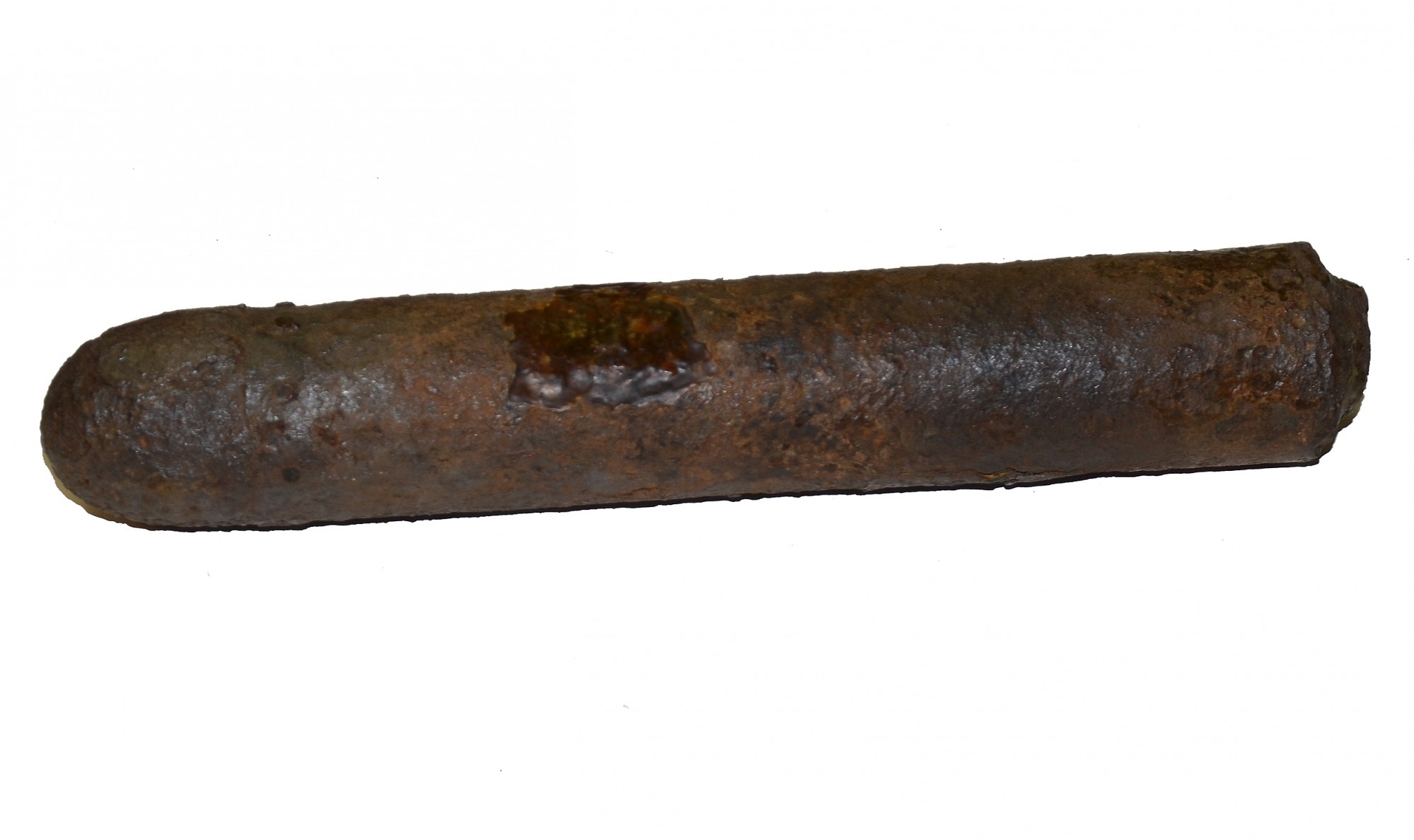site search
online catalog
VERY SCARCE U.S. HALE ROCKET

$1,800.00 SOLD
Originally $2,295.00
Quantity Available: None
Item Code: 727-255
Excavated specimen of the federal type 1 Hale rocket. Rockets played a small roll during the Civil War, but they were used in a few campaigns with both Union and Confederate leaders showing an interest in them. General P.G.T. Beauregard campaigned for a rocket battery. On the union side, Brigadier General William F. Berry had a rocket battery named in his honor. There were strong arguments supporting rockets. Rockets were portable, cheap, free of recoil, could be discharged rapidly, the size of the projectile was almost unlimited, and the noise and fiery tail they produced wrought havoc among mounted troops.
In 1804, Sir William Congreve of England turned his attention to rocket improvement, using more powerful rocket fuel in an iron case with a rear guide stick. These improvements were enough to qualify rockets for 19th century warfare.
The next significant improvement came in 1844, when a British Civil Engineer, William Hale, discarded the “broom stick” tail which had always been thought necessary for stability. Hale added five small exhaust vents known as tangential vents, on the base arranged around the main rocket thrust vent. These vents caused the rocket to spin on its longitudinal axis like an artillery shell. The arrangements of small tangential vents on the base caused the rocket to “wallow” or “keyhole” and in 1855 Hale reduced the number of vents to three.
The solid fuel was composed of a mixture of 10 parts nitre, 2 parts sulphur, and 3 parts charcoal put into the case under pressure. Then a tapered hole was bored down the longitudinal axis with the largest end at the base.
Civil War rockets were launched from a tripod stand. One is an iron tube and the other is formed by three iron rods arranged spirally and fastened together by collars to form the bore.
The United States paid Hale $25,000 in the period 1847-1865 for use of his design. The two sizes used by the federals were 2 1/4” and 3 ¼” in diameters. They came in solid shot, shell, and case-shot variety.
General George McClellan had a rocket battery in his Army of the Potomac and employed it during the spring of 1862 in the Peninsular Campaign. About 20 of the 2 ¼” Hale rockets have been unearthed in the last few years in the vicinity of the Battle of Seven Pines. They all had the solid heads and three rear tangential vents.
The example shown here is of the 2 ¼” version, 13.63” in full length and weighs 5 pounds with the three rear tangential vents. The outer iron casing exhibits deep pitting with some surface fissures resulting from long term exposure to the elements. There is one acrylic patch repair measuring roughly 2’’ by 2’’ located on the upper face of the cylinder body. The area and time of recovery is unknown.
~~~~~~~~~~~~~~~~~~~~~~~~~~~~~~~~~~~
THIS ITEM, AS WITH ALL OTHER ITEMS AVAILABLE ON OUR WEB SITE,
MAY BE PURCHASED THROUGH OUR LAYAWAY PROGRAM.
FOR OUR POLICIES AND TERMS,
CLICK ON ‘CONTACT US’ AT THE TOP OF ANY PAGE ON THE SITE,
THEN ON ‘LAYAWAY POLICY’.
THANK YOU!
Inquire About VERY SCARCE U.S. HALE ROCKET
For inquiries, please email us at [email protected]
Most Popular
Historical Firearms Stolen From The National Civil War Museum In Harrisburg, Pa »
Theft From Gravesite Of Gen. John Reynolds »
Cavalry Carbine Sling Swivel »
Fine Condition Brass Infantry Bugle Insignia »
featured item
RARE M1840 U.S. ARTILLERY OFFICER’S SABER MADE BY AMES BUT ETCHED AND RETAILED BY SCHUYLER, HARTLEY AND GRAHAM: THE ONE IN THE BOOK!
This is an extremely rare M1840 U.S. artillery officer’s saber made by Ames but etched and retailed by Schuyler, Hartley and Graham. Thillmann knew only of this one example, and until it was found it was unclear if Schuyler, Hartley and Graham… (870-637). Learn More »








